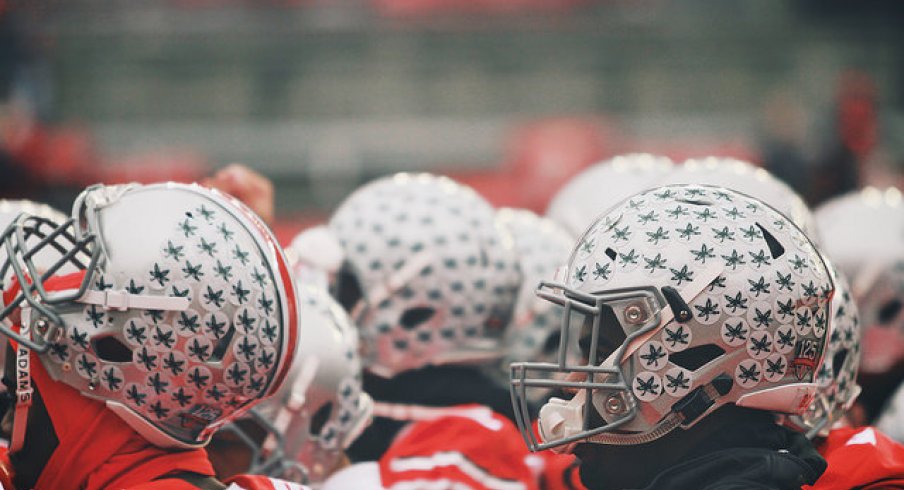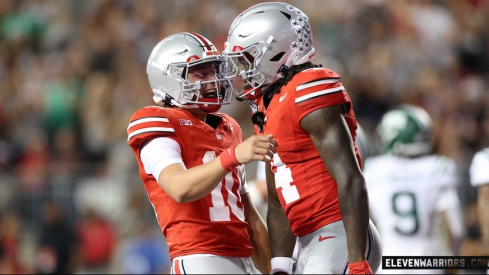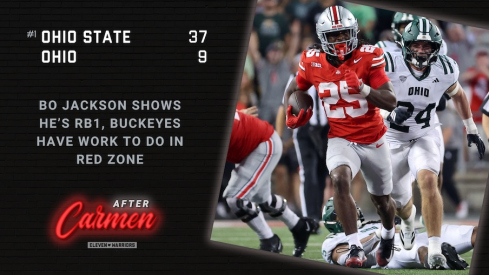The most infamous diagnosis in football: Torn ACL.
The anterior cruciate ligament (ACL) is the most commonly injured ligament in the knee, and among all NCAA sports, football players comprise the majority of ACL tears (53%). This is actually largely because of the non-contact movements required in football. Running, jumping, decelerating, pivoting, and cutting all pose a risk for ligament injury and rupture. Contact-related ACL injuries of course occur, but they are less prevalent.
Buckeye Nation is familiar with torn ACLs. Senior Devan Bogard, former special teams member and current student intern with the strength and conditioning staff, has suffered three consecutive ACL tears. Quarterback J.T. Barrett suffered a torn ACL his senior year of high school and redshirted his freshman year of college to continue his rehab. LB Kyle Berger has two tears of his own. Two incoming freshmen (defensive lineman Dre’Mont Jones and tight end A.J. Alexander) tore their ACLs within the past year.
With operative management, recovery time after ACL reconstruction is about 6-12 months. Needless to say, the best management option is prevention — not getting injured in the first place.
Is it possible to prevent ACL tears? Research says probably.
The most effective prevention program focuses on neuromuscular training; what that means is training which optimizes the way the nervous system talks to the muscles. The nervous system is the boss of the muscles, and neuromuscular training is like a leadership seminar.
The concept of neuromuscular training encompasses the term "muscle memory," which actually means "motor learning," which more simply means performing a task over and over until it can be performed without conscious effort (ex- driving). With enough repetition to correct a faulty technique, a more safe, ACL-preserving technique can become "automatic."
All this learning happens at a cellular level in the brain. Before this article completely nerds out on neuromolecular science, suffice it to say that an athlete's movement habits can be effectively calibrated to minimize injury risk.
A well-designed neuromuscular training program incorporates all of the following:
- High-intensity jumping plyos
- Strength + balance exercises
- Exercises focused on the “core” (hip, pelvis, and lower torso muscles)
- Biomechanical analysis (fancy computers that give feedback to the athletes about proper movement; most large universities have their own lab or access to a lab equipped for this)
- Adequate frequency and duration (at least two sessions per week for at least six consecutive weeks)
The best time to start these programs is early in an athlete’s career before “bad habits” develop, like poor biomechanics during high-risk movements (ex- improper landing technique from jumps). However, starting neuromuscular training at any point can lend measurable risk reduction.
The Ohio State University athletic department has access to all of the most up-to-date research and resources. The Buckeyes are in good hands, and pre-season injury prevention is emphasized for all sports. All the preparation in the world cannot prevent every ACL tear, but the appropriately established precautions are certainly employed to keep the athletes set up for healthy seasons and strong careers.
References:
- Hewett TE, Ford KR, Myer GD. Anterior cruciate ligament injuries in female athletes: Part 2, a meta-analysis of neuromuscular interventions aimed at injury prevention. Am J Sports Med 2006; 34:490.
- Myer GD, Sugimoto D, Thomas S, Hewett TE. The influence of age on the effectiveness of neuromuscular training to reduce anterior cruciate ligament injury in female athletes: a meta-analysis. Am J Sports Med 2013; 41:203.
- Sugimoto D, Myer GD, Foss KD, Hewett TE. Specific exercise effects of preventive neuromuscular training intervention on anterior cruciate ligament injury risk reduction in young females: meta-analysis and subgroup analysis. Br J Sports Med 2015; 49:282.
- Taylor JB, Waxman JP, Richter SJ, Shultz SJ. Evaluation of the effectiveness of anterior cruciate ligament injury prevention programme training components: a systematic review and meta-analysis. Br J Sports Med 2015; 49:79.


